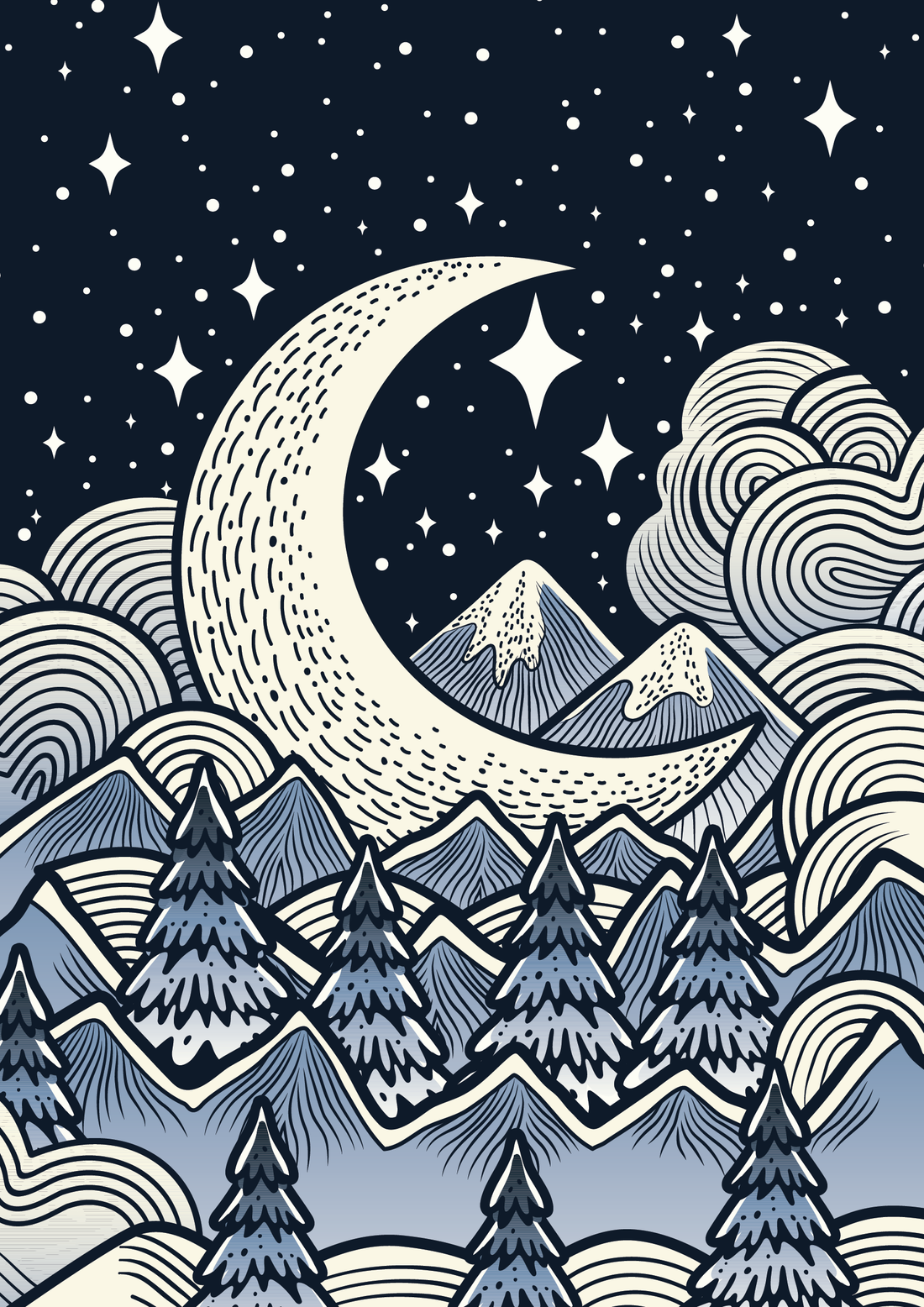
Why Every Full Moon Has a Name — and What They Mean in Folklore
Share
Look up at any full moon and it’s easy to feel that pull — something ancient, something steady, something we’ve been watching for far longer than we’ve been naming months. Long before electric light or calendar apps, the moon was the clock that mattered most. And every bright round face it showed us had a name.
A Calendar Written in Light
For early farming and foraging communities, the moon wasn’t just decoration. It guided the rhythms of planting, harvesting, hunting, and resting. Before we marked time in weeks and workdays, people measured life by the cycle of light and dark — a calendar written in the sky.
Different cultures gave different names to each full moon, often tied to what the land was doing at that time. In northern Europe and later in early America, those names became a kind of shared folklore: part weather report, part survival guide, part poetry.
Each name carried meaning — and a reminder of what mattered most that month.
The Folk Moons Through the Year
Here’s a glimpse at some of the most enduring names and the stories they tell:
January – Wolf Moon (or Quiet Moon)
Named for the howls that echoed through midwinter forests. A time of endurance and instinct, when communities relied on one another for warmth and survival.
February – Snow Moon (or Ice Moon)
The heaviest snows fell now, and food was scarce. A moon of resilience and patience, marking the quiet before the first thaw.
March – Crow Moon (or Sap Moon, or Worm Moon)
As the ground softened, worms stirred and sap began to rise in the trees. A moon of awakening and renewal.
April – Pink Moon (or Seed Moon, or Awakening Moon)
Named for early wildflowers like ground phlox. The world wakes fully now, and new life takes root.
May – Flower Moon (or Hare Moon)
Everything blooms at once. Fertility, creativity, and beauty at their peak — a celebration of abundance and connection.
June – Strawberry Moon (or Mead Moon)
The brief, sweet season of berries and honey wine. A moon of reward, sweetness, and fleeting joy.
July – Buck Moon (or Thunder Moon)
When deer grew new antlers and summer storms rolled in. A moon of strength, vitality, and motion.
August – Sturgeon Moon (or Grain Moon)
Named for the great fish caught in late summer, or for the ripening fields of grain. A moon of sustenance and generosity.
September – Harvest Moon (or Corn Moon)
Closest to the equinox, it lights the night for gathering crops. A moon of gratitude, completion, and balance.
October – Hunter’s Moon (or Blood Moon, or Falling Leaf Moon)
The final harvest gives way to preparation. A moon of foresight, endurance, and letting go.
November – Beaver Moon (or Mourning Moon)
In old Europe, this was a time for setting traps and preparing for winter. Spiritually, it’s a moon of reflection and closure — releasing what no longer serves.
December – Cold Moon (or Long Night Moon)
The nights reach their deepest stretch. A moon of stillness, rest, and quiet clarity.
More Than Names — A Way of Seeing
Each name came from direct observation — the earth telling its own story through cycles. These weren’t abstract symbols; they were survival notes passed down through generations.
And yet, they’re still relevant today.
Following the moons through the year can bring a gentler rhythm back into modern life. They remind us when to plant ideas, when to gather what we’ve grown, and when to rest.
You don’t have to live by the tides to feel that pull — just look up once a month and let it anchor you.
Marking the Moons at Fog & Fable
At Fog & Fable, we take inspiration from this lunar folklore — the small, beautiful ways our ancestors found meaning in nature’s cycles. Each moon still carries its quiet message: to slow down, to notice, to live a little more in tune with the turning of the seasons.
Our collections often draw on these stories — like the Hunter’s Moon, Cold Moon, and Flower Moon, each echoing the textures and symbols of its time of year.
They’re reminders that even as the world rushes forward, we can still find rhythm, reflection, and magic in the same light our ancestors followed.




